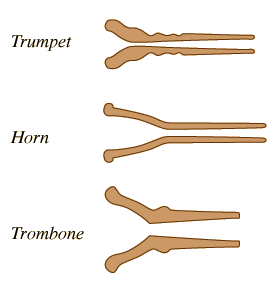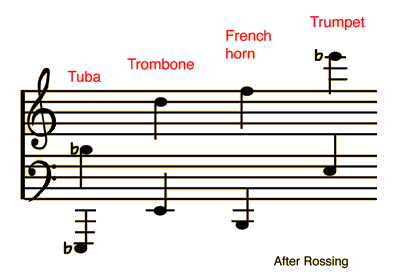Brass Instrument Mouthpieces
 |
The mouthpieces of different brass instruments are significantly different and contribute to the characteristic timbre of the instruments. They consist of a cup with a rim to accommodate the lips and a backbore tube to connect to the rest of the instrument. Besides providing the place for the player's lips to vibrate, the mouthpiece lowers the high resonances of the instrument (the mouthpiece effect). |
Brass concepts
Brass instruments
Musical instruments
Reference
Backus
pp. 263-4
| HyperPhysics***** Sound | R Nave |
